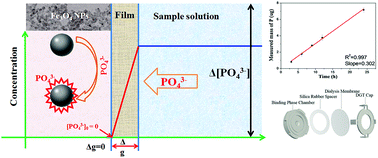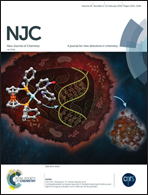Novel Fe3O4 nanoparticles-based DGT device for dissolved reactive phosphate measurement†
Abstract
An aqueous suspension of iron oxide nanoparticles (Fe3O4 NPs) was prepared as a novel liquid binding phase in a diffusive gradients in thin-films (DGT) device (Fe3O4-DGT) combined with inductively coupled plasma optical emission spectrophotometry (ICP-OES) for the sampling measurement of dissolved reactive phosphate (DRP) in water. The DGT uptake of DRP increased linearly with deployment time, relying on the superior binding efficiency of Fe3O4 NPs toward phosphate. The adsorption mechanism of DRP on Fe3O4 NPs was illustrated through FT-IR and XPS. Various factors in the Fe3O4-DGT performance for the sampling of DRP were taken into account, including the initial concentration of phosphate, deployment time, pH value, ionic strength, interference from major competitor ions and the aging effect of the liquid binding phase. In the present study, the effective capacity of the Fe3O4-DGT device toward DRP was approximately 105 μg of phosphate per device (15.4 μg P cm−2). Compared with the phosphomolybdenum blue (PMB) method, successful field deployments of Fe3O4-DGTs samplers in the Nanfei River indicated that a basic Fe3O4-DGT coupled with the ICP-OES method was suitable for long-term monitoring of the DRP concentration in situ.



 Please wait while we load your content...
Please wait while we load your content...